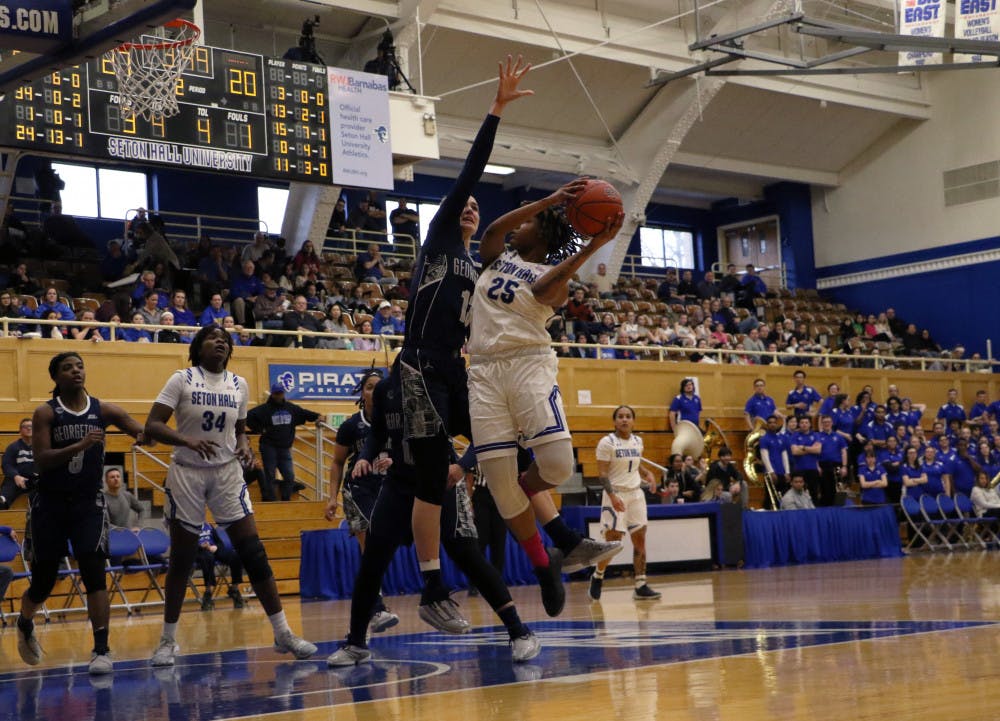Professors assign group work as an attempt to promote collaboration within the student body and teach students the importance of overcoming unexpected roadblocks when depending on others in a professional situation. Group projects can unfold in one of two ways. Students either work in a cohesive manner and contribute equally to the final product or the work is unbalanced because of different work ethics within the group and time spent together proves unproductive.
The need to work in groups is inherently increased or decreased across different majors. Business and diplomacy students, for example, are far more likely to be involved in group or team projects than are science or arts majors.
Freshman Aidan Miller, a diplomacy major, prefers to work alone.
“I don’t like to rely on other people,” he said. “I know myself enough to work through any problems.”
Students find that problems with group projects, assigned by a professor or initiated by the students themselves, mainly come from a lack of dependability and unclear roles, especially concerning leadership. Willingly or not, student leaders are forced to emerge, taking on the work of less productive group members.
“I basically don’t trust people to do their jobs,” sophomore Gary Rauco said. “Usually people come through but sometimes I have to pick up the pieces and I’m fine with that because I don’t like getting a bad grade.”
Freshman Colin Kimberlin, a biochemistry and diplomacy major, said: “The teacher assigns people together but she doesn’t necessarily understand everyone’s abilities or what they’re best at when they’re working together in a team environment. Those people usually lack the competency and ability to execute what everyone wants because they have all these ideas, but no execution.”
Kimberlin further explained that people clumped together may all want to be leaders and thus they all have to fight for their ideas. On the other hand, what he calls “followers” are put together and no direction is provided. In both situations, there is “no cohesive sense of team.”
Maria Hernandez, a professor of oral communication, advised students to “make the professor aware of what’s going on so it’s not all put on you if they don’t do their part. Whatever part of your presentation that is given to you, do it. Trust the professor to know that you did what you were supposed to and see who it was that didn’t carry their load.”
She further explained that despite roadblocks, it is essential to learn how to work in groups, because you’ll most likely be asked to work in groups no matter what career you choose. Hernandez further advised students to choose a leader of the group to delegate work to each member.
“Type A personalities, people that take control, have the best success in group presentations,” she said. “People who tend to be more shy have a hard time succeeding in group work unless explicitly told what to do.”
However, if carefully planned and personally executed, groups can produce equal and informed results. Kimberlin strongly prefers the type of one-on-one research with experts that he is involved in as a biochemistry major. Kimberlin works singularly on research and refers to Dr. Monika Raj for direction.
“You come from a different perspective,” Kimberlin said. “You work so closely with one person, but they tell you what to do and then you expand on that. It’s not where someone just gives you a project and you are given free reign. It’s not necessarily strict guidelines for you, its a direction for you to go in. They won’t tell you exactly what to do, you have to figure it out for yourself.”
Students discount the potential benefits of learning to work in groups, bad and good, even though they are likely to encounter collaborative situations in their professions.
Hernandez said about students’ potential careers: “Your project may be across certain departments and four people in their departments want to shine but you have to work with it. You have to learn to deal with those dynamics.”
Even extending outside the science community, the research and work done individually then adopted as a cohesive whole is often a preferable method of training academics to students, specifically in the research process.
“I usually like to take a role and just do it on my own,” Rauco said. “I like to do groups when we have our own separate parts and in the end we converge together.”
Anna Griffin can be reached at anna.griffin@student.shu.edu.





